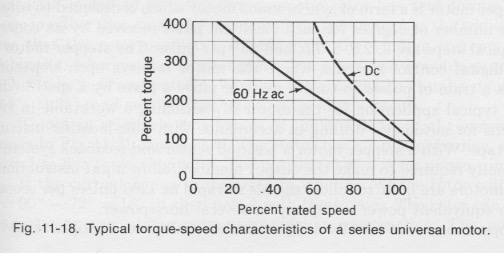A universal motor operating with DC power at a voltage equal to the motor's RMS AC voltage rating will have speed vs. torque capability curves that show both higher speed and higher torque capability when operating with DC as shown below. The actual operating speed and torque will be determined by the load's speed vs. torque demand torque. At steady-state, operation will be at the intersection of the curves.
The safe continuous operation point or the safe operation for a given load vs. time duty cycle will be determine by the motor's efficiency and its capability to dissipate heat due to losses. The motor will be more efficient with DC power because of iron loss reduction. However the copper losses will be higher at a higher torque or speed since the motor's output power is proportional to torque multiplied by speed.
Will AC or DC give more speed and torque for a 30 min continuous operation ?
Yes. However how much more speed and and torque and how long it will be safe to operate will be determined by the load's torque vs. speed demand curve and the motor's efficiency and cooling capability.

Image from Fitzgerald, Kingsley, Umans, Electric Machinery, 4th ed


